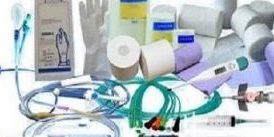Clinical Evaluation of Equivalent Devices
What extent of data on medical devices from other manufacturers does needed to demonstrate equivalence?
FOR INSTANCE, Annex XIV (3) EU MDR refers to non-implantable devices of risk classes I – IIb. It specifies that manufacturers must provide clear evidence that they have sufficient access to the device’s data with which they claim equivalence.
Art. 61 para. 5, in contrast, refers to implantable devices or devices in risk class III. It says that two manufacturers need a contract explicitly allowing the manufacturer of the second device full access to the technical documentation on an ongoing basis.
How should the manufacturers comply with EU MDR requirements with “sufficient access” and “full access to technical documentation” in everyday practice?
It’s vital to remember that the equivalence may only be predicated on a single device, and all three criteria (clinical, technical, and biological) must be met.
Comparable indicates that the discrepancies between the device under assessment and the device considered to be equivalent would not cause a clinically significant difference in the device’s performance and safety.
It is necessary to identify, fully disclose, and analyse the differences between the equipment under examination and the device assumed to be equivalent. Explanations should explain why the variations are unlikely to have a significant impact on the device’s clinical performance and safety.
The maker should look into whether the medical equipment assumed to be identical was made with a particular treatment (such as a surface modification, which alters material properties). If this is the case, the medicine may result in variations in technical and biological features, which should be considered while demonstrating equivalence and reported in the CER.
Clinically significant specifications and qualities should be assessed in both the equipment under review and the device considered to be comparable and given in comparison tabulations if measurements are practicable.
When a detailed chemical characterization of materials in contact with the body is required, ISO 10993-18 Annex C can be used to demonstrate toxicological equivalence. However, this is only part of the biological criteria evaluation.
In order to compare shapes and sizes of elements that come into contact with the body, comparative drawings or pictures should be included; the manufacturer is expected to include supporting non-clinical information (e.g. pre-clinical study reports) in the device’s technical documentation and the clinical evaluation report.






